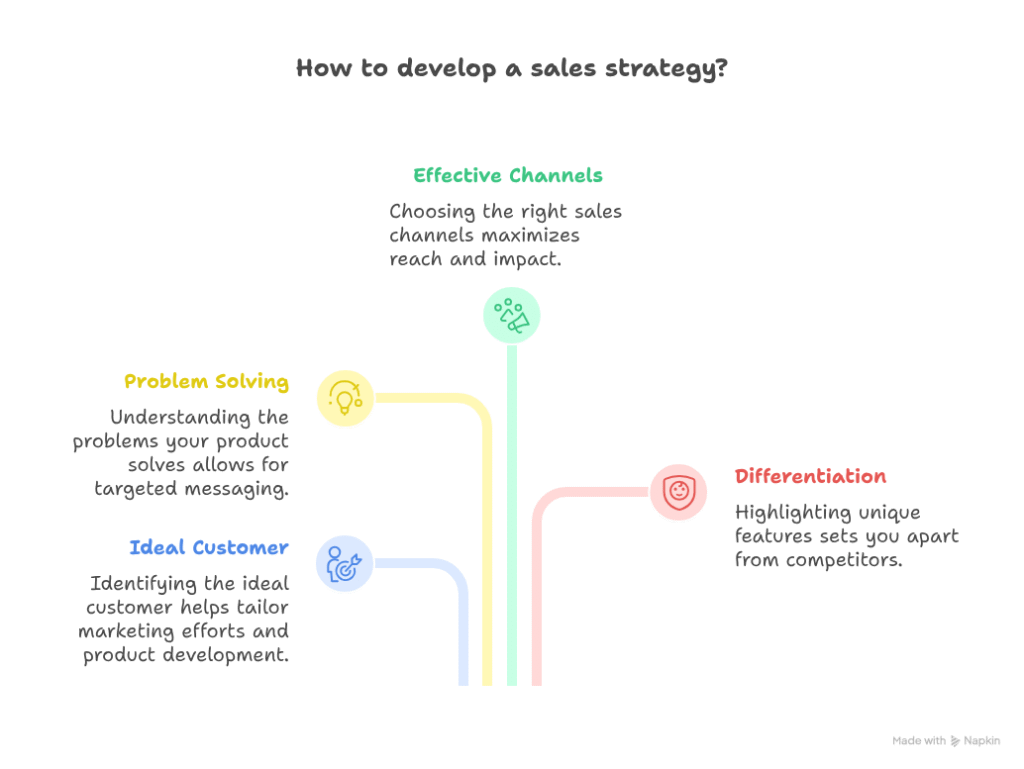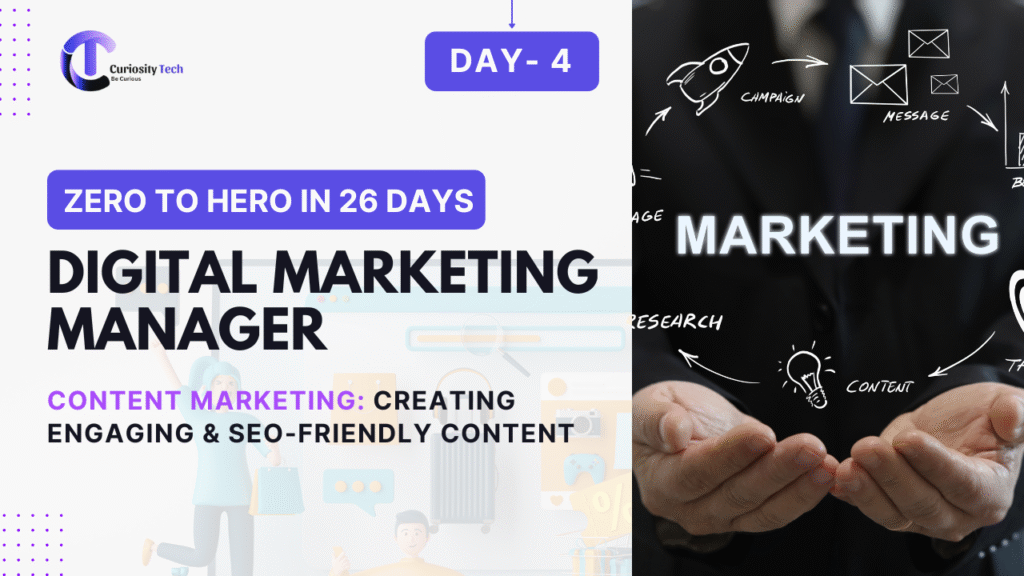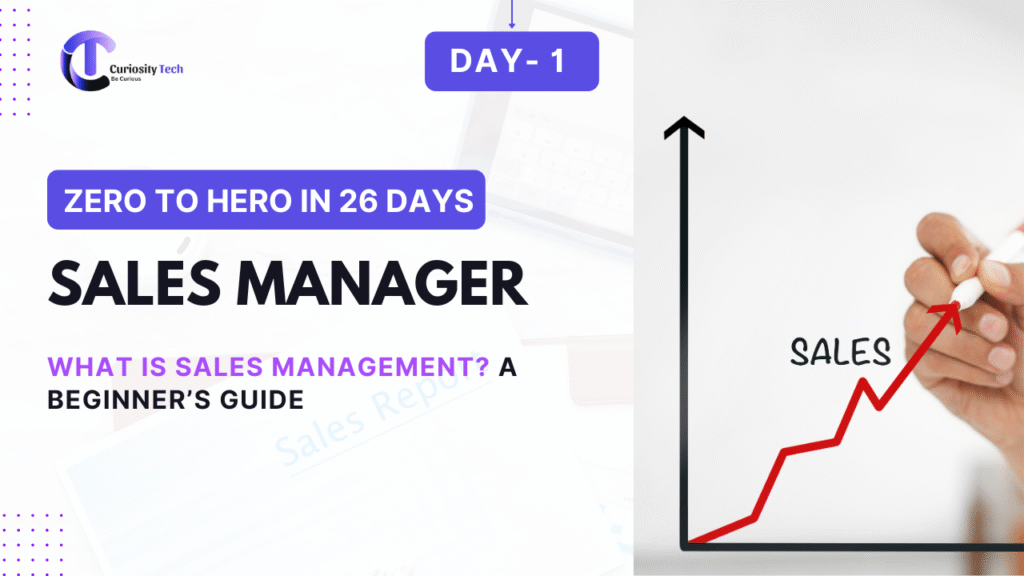Sales are the lifeblood of any business. Without a clear and structured approach to sales strategy and planning, even the best products or services can struggle to reach their potential in the market. Whether you’re an aspiring entrepreneur, a budding sales professional, or a small business owner, understanding the foundational principles of sales strategy and planning is crucial. Today, on Day 4 of our comprehensive learning series, we explore Sales Strategy & Planning Basics for Beginners, and how platforms like CuriosityTech.in can provide guidance, tools, and insights to strengthen your approach.
What is a Sales Strategy?
At its core, a sales strategy is a structured plan that defines how a business will sell its products or services to achieve its revenue goals. It involves understanding your target audience, defining value propositions, selecting the right channels, and implementing the tactics necessary to convert leads into customers.
A good sales strategy answers these key questions:
- Who is your ideal customer?
- What problems does your product/service solve?
- Which sales channels are most effective?
- How do you differentiate from competitors?

Think of it as the roadmap to revenue—without it, sales efforts can be inconsistent, reactive, or inefficient.
The Role of Sales Planning
While strategy defines the “what” and “why,” sales planning focuses on the “how” and “when.” Sales planning breaks the overarching strategy into actionable steps, outlining specific activities, timelines, responsibilities, and measurable goals.
Key components of an effective sales plan include:
- Target Market Definition: Identify niche markets and buyer personas.
- Sales Goals: Set clear, achievable, and measurable revenue targets.
- Tactics & Channels: Decide whether to use direct sales, inbound marketing, outbound campaigns, social selling, or a combination.
- Budget Allocation: Assign resources efficiently for maximum ROI.
- P erformance Metrics: Track KPIs like lead conversion rate, average deal size, sales cycle length, and customer acquisition cost.
Platforms like CuriosityTech.in provide beginner-friendly guides, tools, and workshops that simplify these concepts, helping startups and small businesses design actionable sales plans with confidence.
Hierarchical Structure of Sales Strategy
Visualizing a sales strategy hierarchy can clarify how each element connects to your business goals. Here’s a simple hierarchical table:
| Level | Component | Description |
| 1 | Vision & Mission | Overall business purpose and sales objectives. |
| 2 | Sales Goals | Revenue targets, growth percentage, market share ambitions. |
| 3 | Target Audience | Ideal customer profiles, pain points, demographics. |
| 4 | Sales Channels | Online, offline, B2B, B2C, partnerships, or marketplaces. |
| 5 | Tactics & Activities | Cold calling, email campaigns, demos, social media outreach. |
| 6 | KPIs & Metrics | Conversion rates, customer retention, sales pipeline velocity. |
This hierarchy ensures every sales activity is aligned with broader business goals, creating a cohesive and measurable strategy.

Sales Strategy Techniques for Beginners
For beginners, the world of sales can feel overwhelming. Here are practical, easy-to-implement techniques:
- Build Buyer Personas: Understand your customers’ motivations, challenges, and buying behavior.
- Segment Your Market: Focus on high-potential segments rather than trying to sell to everyone.
- Map the Sales Process: Define each stage of the customer journey from lead generation to closing.
- Leverage CRM Tools: Tools like Salesforce or HubSpot help track leads, opportunities, and sales activities.
- C ontinuous Feedback Loop: Regularly review sales data and adjust strategies to improve performance.
CuriosityTech.in emphasizes creating beginner-friendly guides and templates that help businesses implement these strategies without confusion or heavy investment in complex tools.
Infographic: Beginner-Friendly Sales Funnel
A sales funnel visually represents how leads progress through the sales process. Here’s a textual description:
- Awareness: Potential customers learn about your product/service.
- Interest: Leads show curiosity or engage with content.
- Consideration: Leads evaluate and compare solutions.
- Intent: Leads express intent to buy, request demos, or ask questions.
- Purchase: Leads convert into paying customers
- Loyalty & Advocacy: Repeat purchases and referrals from satisfied customers.
This funnel demonstrates the importance of targeted messaging and tailored strategies at each stage of the customer journey. CuriosityTech.in provides detailed guides on designing such funnels for startups and small businesses.
Practical Tips to Implement Sales Strategy Effectively
- Set SMART Goals: Specific, Measurable, Achievable, Relevant, Time-bound.
- Focus on High-Impact Activities: Prioritize tasks that directly influence revenue.
- Align Sales & Marketing: Coordination ensures consistent messaging and higher conversions.
- Train Your Team: A skilled sales team executes strategies more efficiently.
- Monitor & Adjust: Use metrics and feedback to refine strategies continuously.

Conclusion
Sales strategy and planning are the foundation of sustainable business growth. For beginners, it’s essential to start with a clear vision, actionable plan, and measurable goals. By breaking down the process into understandable steps, visualizing the hierarchy, and following a structured approach, even small teams can achieve significant results.
Platforms like CuriosityTech.in provide valuable resources, step-by-step guides, and practical tools that help beginners not just learn sales strategy but also implement it successfully in real-world scenarios. By integrating insights, best practices, and continuous learning, businesses can transform potential leads into loyal customers and create a lasting impact in the market.



